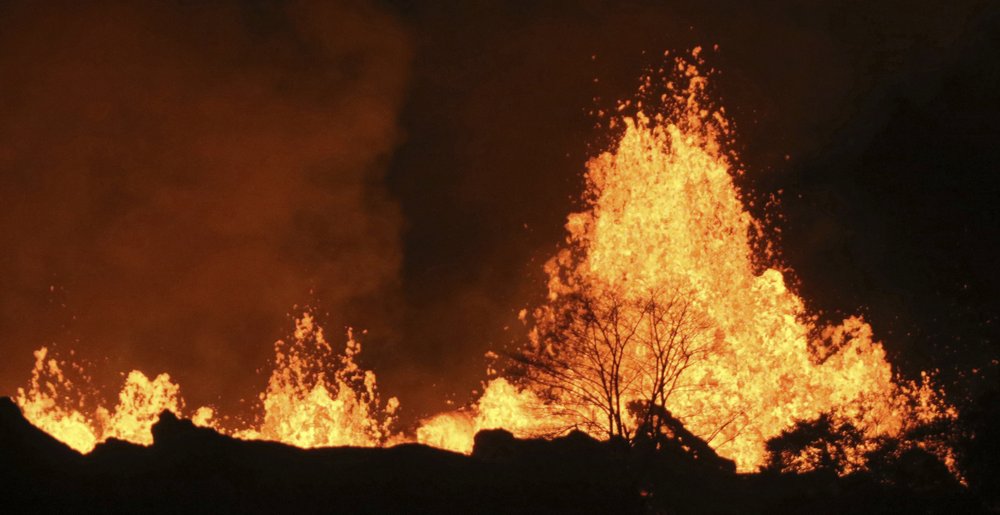For the first time in recorded history, a pond of water has been discovered inside the summit crater of Hawaii’s Kilauea volcano, a development that could signal a shift to a more explosive phase of future eruptions.
After a week of questions about a mysterious green patch at the bottom of the volcano’s Halemaumau crater, the former home of a famed lava lake, researchers confirmed the presence of water on Thursday, officials with the U.S. Geological Survey told The Associated Press on Friday.
“The question is what does this mean in the evolution of the volcano?” USGS scientist emeritus Don Swanson said.
Halemaumau has never had water since written observations began, he said, so the pond is unusual.
Scientists aren’t exactly certain what will happen next, but when lava interacts with water it can cause explosive eruptions.
One possibility is that lava could slowly heat up the groundwater and eventually create a new lava lake, Swanson said. Lava could also interact with the water table and create small explosions.
“The other possibility is that magma rises rapidly,” Swanson said. “That could produce a larger explosion.”
USGS officials stressed that there is currently “no reason to think hazards at the summit have increased or decreased” because of the discovery of water.
But Swanson said in June that the presence of water could be a significant switch in the long-term activity of the volcano.
Kilauea has a history of alternating between long periods of explosive eruptions and times of slower, so-called effusive phases.
Explosive periods are exactly what they sound like, centuries of massive explosions that send hot debris racing down the hillsides and towering columns of rock and ash high into the atmosphere.
Effusive periods, which Kilauea has been in for about 200 years, are marked by slower, steady lava flows that — in comparison — trickle out of the ground.
The next explosive period, researchers believe, will be preceded by a massive collapse of Kilauea’s caldera floor.
An eruption that was ongoing for more than 30 years came to a dramatic end last year when lava exploded from Kilauea’s flank and covered a huge swath of land, destroying hundreds of homes in one of the largest eruptions in recent history.
That eruption came with a significant drop of the caldera floor. Halemaumau crater collapsed nearly 2,000 feet (600 meters) over the course of several months, but Swanson said he would expect a larger, “sort of wholesale collapse of the caldera floor” to trigger a prolonged explosive period.
(AP)











